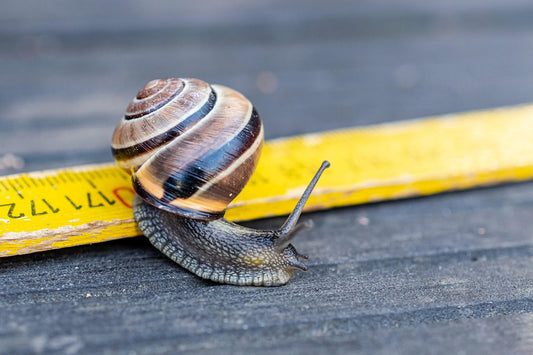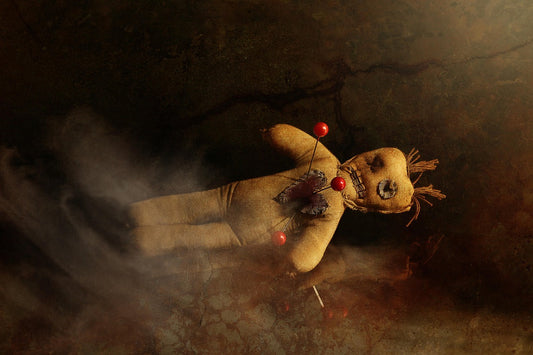 This is a simplified picture of a single ended tube power amplifier. Where it says "input voltage" that's where the output of your preamplifier connects with the music. On the lower side of the input voltage circle is ground, the top side the input to the tube. The big circle thingie in the middle of the drawing is the tube with its three components: the grid (input), cathode (bottom part going to ground), and plate (top part going to the speaker). The squiggly thing connecting the speaker is an output transformer. On the far right side is a drawing of a battery: the top part the + and the bottom the -.
There are many of these designs on the market today, referred to as SET (Single Ended Triode). They are much loved and highly prized for their warmth of sound. Many Audiophiles will listen to nothing else. While I enjoy their very musical sound I am troubled by their shortcomings.
Tomorrow let's look at the plus and minus of SET designs and then we'll move on to complimentary styles and do the same for them.
There ain't no perfect circuit, so this will just help you get your arms around the various types.
This is a simplified picture of a single ended tube power amplifier. Where it says "input voltage" that's where the output of your preamplifier connects with the music. On the lower side of the input voltage circle is ground, the top side the input to the tube. The big circle thingie in the middle of the drawing is the tube with its three components: the grid (input), cathode (bottom part going to ground), and plate (top part going to the speaker). The squiggly thing connecting the speaker is an output transformer. On the far right side is a drawing of a battery: the top part the + and the bottom the -.
There are many of these designs on the market today, referred to as SET (Single Ended Triode). They are much loved and highly prized for their warmth of sound. Many Audiophiles will listen to nothing else. While I enjoy their very musical sound I am troubled by their shortcomings.
Tomorrow let's look at the plus and minus of SET designs and then we'll move on to complimentary styles and do the same for them.
There ain't no perfect circuit, so this will just help you get your arms around the various types.
Votes are in
by Paul McGowan
Okay, I received a fair number of requests from people that want the balanced series to continue: far more than those that don't, so onward!
What shall we go over? We left off with the little known fact that balanced circuits reduce common distortion products - sort of a free benefit. But maybe a sidetrack subject would be where these distortions come from and that, my friends, is what we'll touch on today.
If we break amplifier circuitry into topologies there are only a few classic designs: single ended, complimentary, push pull. Certainly there are hundreds of deviations from these classic configurations but space doesn't allow us to cover more than the few we'll focus on. And we can narrow the subject down even further, to two: single ended and complimentary, since few designers use push pull anymore.
 This is a simplified picture of a single ended tube power amplifier. Where it says "input voltage" that's where the output of your preamplifier connects with the music. On the lower side of the input voltage circle is ground, the top side the input to the tube. The big circle thingie in the middle of the drawing is the tube with its three components: the grid (input), cathode (bottom part going to ground), and plate (top part going to the speaker). The squiggly thing connecting the speaker is an output transformer. On the far right side is a drawing of a battery: the top part the + and the bottom the -.
There are many of these designs on the market today, referred to as SET (Single Ended Triode). They are much loved and highly prized for their warmth of sound. Many Audiophiles will listen to nothing else. While I enjoy their very musical sound I am troubled by their shortcomings.
Tomorrow let's look at the plus and minus of SET designs and then we'll move on to complimentary styles and do the same for them.
There ain't no perfect circuit, so this will just help you get your arms around the various types.
This is a simplified picture of a single ended tube power amplifier. Where it says "input voltage" that's where the output of your preamplifier connects with the music. On the lower side of the input voltage circle is ground, the top side the input to the tube. The big circle thingie in the middle of the drawing is the tube with its three components: the grid (input), cathode (bottom part going to ground), and plate (top part going to the speaker). The squiggly thing connecting the speaker is an output transformer. On the far right side is a drawing of a battery: the top part the + and the bottom the -.
There are many of these designs on the market today, referred to as SET (Single Ended Triode). They are much loved and highly prized for their warmth of sound. Many Audiophiles will listen to nothing else. While I enjoy their very musical sound I am troubled by their shortcomings.
Tomorrow let's look at the plus and minus of SET designs and then we'll move on to complimentary styles and do the same for them.
There ain't no perfect circuit, so this will just help you get your arms around the various types.
 This is a simplified picture of a single ended tube power amplifier. Where it says "input voltage" that's where the output of your preamplifier connects with the music. On the lower side of the input voltage circle is ground, the top side the input to the tube. The big circle thingie in the middle of the drawing is the tube with its three components: the grid (input), cathode (bottom part going to ground), and plate (top part going to the speaker). The squiggly thing connecting the speaker is an output transformer. On the far right side is a drawing of a battery: the top part the + and the bottom the -.
There are many of these designs on the market today, referred to as SET (Single Ended Triode). They are much loved and highly prized for their warmth of sound. Many Audiophiles will listen to nothing else. While I enjoy their very musical sound I am troubled by their shortcomings.
Tomorrow let's look at the plus and minus of SET designs and then we'll move on to complimentary styles and do the same for them.
There ain't no perfect circuit, so this will just help you get your arms around the various types.
This is a simplified picture of a single ended tube power amplifier. Where it says "input voltage" that's where the output of your preamplifier connects with the music. On the lower side of the input voltage circle is ground, the top side the input to the tube. The big circle thingie in the middle of the drawing is the tube with its three components: the grid (input), cathode (bottom part going to ground), and plate (top part going to the speaker). The squiggly thing connecting the speaker is an output transformer. On the far right side is a drawing of a battery: the top part the + and the bottom the -.
There are many of these designs on the market today, referred to as SET (Single Ended Triode). They are much loved and highly prized for their warmth of sound. Many Audiophiles will listen to nothing else. While I enjoy their very musical sound I am troubled by their shortcomings.
Tomorrow let's look at the plus and minus of SET designs and then we'll move on to complimentary styles and do the same for them.
There ain't no perfect circuit, so this will just help you get your arms around the various types.
- Choosing a selection results in a full page refresh.
- Opens in a new window.








